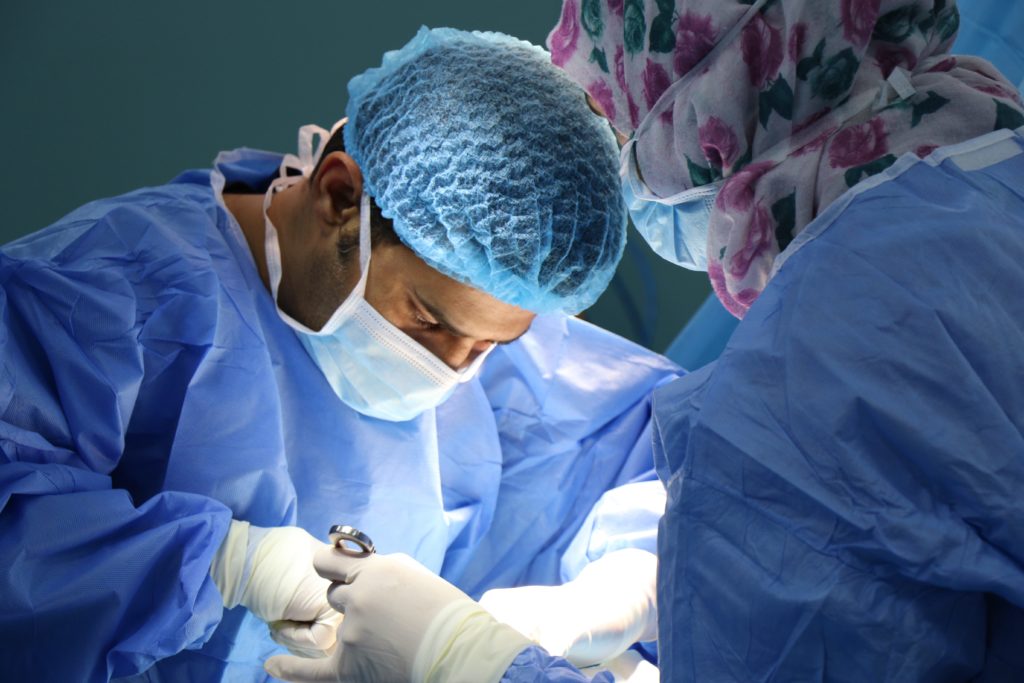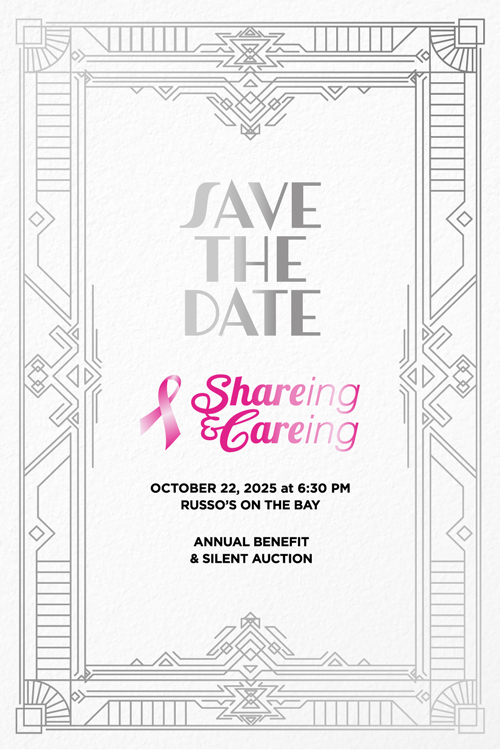Almost all breast cancer treatment plans involve some type of surgery to remove the breast tumor. While women with very early stages may be treated with mastectomies alone, most patients are treated with a combination of surgery and radiation therapy, chemotherapy, or immunotherapy followed by breast reconstruction surgery. Here’s a breakdown of some of the most common surgical treatments for breast cancer.

Mastectomies
A mastectomy is the removal of an entire breast, including the breast tissue. There are many types of mastectomies, but, if the word “mastectomy” is used singularly by itself, it is referring to the removal of one breast.
- Double mastectomy: A double mastectomy, also called a bilateral mastectomy, is when both breasts are removed.
- Nipple-sparing mastectomy: Nipple-sparing mastectomy is less extreme than the traditional mastectomy, preserving the nipple, areola, and skin, but still removing the breast tissue.
- Radical mastectomy: Also called a Halsted radical mastectomy, this is a type of mastectomy that removes the breast tissue, chest and breast muscles, and the underarm lymph nodes. This was once the most common type of mastectomy but is now used only in cases where the cancer has spread to the chest muscles.
- Modified radical mastectomy: A modified radical mastectomy is a mastectomy that removes the breast tissue, underarm lymph nodes, and lining over the chest muscles. The chest wall muscles may or may not be removed.
- Prophylactic mastectomy: A prophylactic mastectomy is when someone has a mastectomy to prevent a diagnosis of breast cancer rather than to treat it. Women at high risk for breast cancer, such as women with a mutated BRCA gene, strong family history, or previous diagnosis of breast cancer make good candidates for this surgery. Preventative mastectomies came to the public’s attention when high-profile celebrity Angelina Jolie chose this treatment in 2013.
- Contralateral prophylactic mastectomy (CPM): Contralateral means “other side.” The opposite of contralateral is ipsilateral (same side). A contralateral prophylactic mastectomy removes the non-cancerous breast to prevent breast cancer.
Lumpectomy
A lumpectomy is also called breast conserving surgery (BCS), partial mastectomy, or quadrantectomy. Lumpectomies remove just the cancerous “lump” along with some of the surrounding tissue. This is one of the most common types of breast surgeries and is often performed instead of a mastectomy to preserve the breast. Lumpectomies almost always require radiation therapy afterwards to fully treat the breast cancer.
Lymph Node Surgery
The lymph nodes near the breasts are often removed at the same time, as part of a mastectomy or lumpectomy, or as a follow-up procedure. The removed lymph nodes are sent to a lab to determine if the cancer has spread outside of the breast to the lymph nodes. This helps determine the stage of the cancer and can help determine a treatment plan.
- Sentinel lymph node biopsy (SLNB): A sentinel lymph node biopsy is the least aggressive type of lymph node surgery, removing only a few of the lymph nodes where the breast cancer would be most likely to spread.
- Axillary lymph node dissection (ALND): Axillary lymph node dissection removes more lymph nodes, though usually less than twenty.
Get our “Thriver Thursdays” Email
Get all the latest cancer prevention and treatment news plus upcoming survivor programs, straight to your inbox every Thursday. Your privacy is important to us.
Breast Reconstruction Surgery
Breast reconstruction is a type of plastic surgery that rebuilds the breast after a mastectomy or lumpectomy. It can be done at the same time as the initial breast tissue removal or afterwards, in a separate surgery. If you plan to get breast reconstruction surgery, make sure to coordinate with your cancer care team.
Cancer is a leading cause of death in every country in the world and female breast cancer is the most common cancer worldwide. A breast cancer diagnosis is often one of the scariest moments of a person’s life. While there is currently no cure for breast cancer, there are many treatment and medication options available. Discuss with your cancer care team and your family what an appropriate treatment might be for your situation. Depending on your stage, prognosis, health, age, previous history, breast cancer risk factors, type of cancer, and whether you are pregnant or want to be pregnant, some options may be a better fit for you.
If you need help finding a doctor or cancer team, navigating the local Queens medical system, paying for your cancer treatment bills, communicating in your language with your doctor, getting to your appointments, help with insurance claims, or just a friendly ear and hugs of support, please contact us. SHAREing & CAREing is a local non-profit founded and run by cancer survivors with connections to local resources and groups. We are here to help you because we have been in your shoes!
Sources
- “Treating Breast Cancer,” American Cancer Society
- “Nipple-Sparing Mastectomy: Technique and Results of 54 Procedures,” Journal of the American Medical Association, 2004
- “Radical Mastectomy,” National Cancer Institute
- “Preventative Surgery to Reduce Breast Cancer Risk,” American Cancer Society


